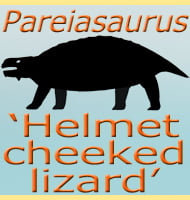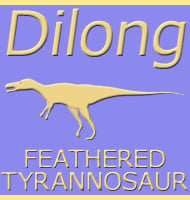In Depth
The small size of Elginia is in stark contrast to the larger pareiasaurs such as Scutosaurus. This reduction in size is often considered an adaptation to the harsh conditions of the end of the Permian. Elginia has a number of spikes protruding from its skull, the largest pair rising from the sides at the top and back of the head. its thought that these horns were primarily for display.
Further Reading
– On some New Reptiles from the Elgin Sandstones. – Transactions of the Royal Society of London, Series B, Biological Sciences 184:431-503 – E. T. Newton – 1893. – The tetrapod fauna of the upper Permian Naobaogou Formation of China: a new species of Elginia (Parareptilia, Pareiasauria) . – Papers in Palaeontology 4(2):197-209. – J. Liu & G. S. Bever – 2018.









